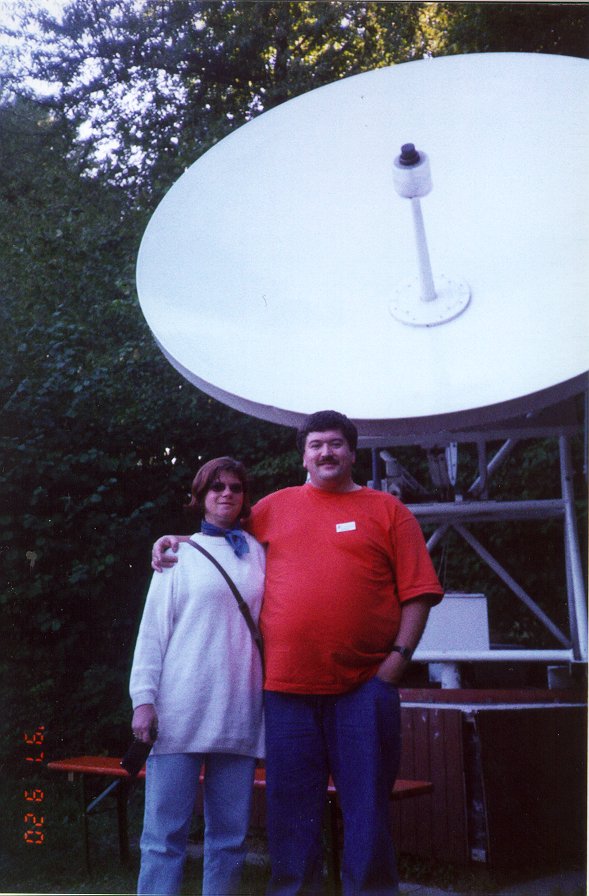
A decent optical telescope costs at least $300 to $400. For free optical astronomy, all you need are your eyes. You can also do some radio astronomy for free—if you own an FM radio or a television set. We thank Tom Crowley of Atlanta Astronomy Club for many of the following ideas. Even they are affordable, don't drop it, because it breaks easily. If that's happen then I'll send you a nice condolence letter.
Have you ever witnessed a meteor shower? The streaks of light in the night sky can be quite spectacular.
Meteors are the bright trails of ionized atmosphere behind tiny bits of cometary debris that enter the earth’s atmosphere. Most meteorites are no larger than a pea. What if we told you that there was another way to watch a meteor shower—using a radio telescope otherwise known as an FM radio?
Meteor counts by radio are about ten times more accurate than visual observation—and, as with any radio observations, you can observe during the day or through clouds. It doesn’t have to be dark or clear outside. You may want to supplement your optical meteor gazing with your radio on cloudy nights.
Recall that the earth’s atmosphere is transparent to some forms of electromagnetic radiation and opaque to others. The upper atmosphere normally reflects low-frequency AM radio signals. In contrast, the atmosphere is transparent to higher frequency FM radio waves, which, as a consequence, have a shorter range. They usually penetrate and are not reflected by the atmosphere.
But something happens when a meteorite enters the atmosphere. Each piece of debris that tears into the atmosphere (at up to 40 miles per second), heats up the air around it and creates a tiny ionized (electrically charged) vapor trail in the upper atmosphere. These columns of charged particles can reflect even higher frequency FM radio waves. This temporary condition means that previously out-of-range FM broadcasts can (for a moment) be heard. During periods of known meteoric activity, stay at the low end of the FM dial and try to find FM radio stations that are from 400 to 1,300 miles away. You might call a distant friend to get the broadcast frequency of a few stations. When a distant station fades in for a second or two, you are indirectly observing a meteor. The trail behind it has momentarily reflected a distant radio signal into your receiver. It helps if you can hook up your radio to an outdoor antenna, but if the meteor shower is fairly intense, you should detect many events even without such an antenna. You can also try tuning your TV set to the lowest unused VHF channel. Again, when a distant station, normally out of range, fades in and the signal becomes strong for a second or two, you know a meteor has entered the atmosphere. (Note that this works only with a television receiving signals from an outdoor antenna—not via cable or satellite!)
Just by tuning in your radio, you can do some meaningful radio astronomy. You can make it more interesting by recording the events on tape, or keeping a written record of the number of events you detect per hour.
But amateur radio astronomy need not be limited to listening for distant FM radio or TV stations. If you are an amateur radio operator—a ham—you already have much of the equipment required for more serious radio astronomy. If you aren’t into amateur radio, you can get started for a highly variable but modest cost. The first step to take is to log onto SARA’s World Wide Web site (www.bambi.net/sara.html) for overview information.
Essentially, amateurs can use either nonimaging or imaging radio astronomy techniques. Nonimaging techniques (which monitor radio emissions without pinpointing locations) require a simple shortwave receiver, usually modified to receive a narrow band of frequencies, and a simple antenna system. With such equipment, you can track radio emission from Jupiter, solar flares, and meteor events. Imaging techniques (which provide more detailed information on the location and nature of the signal) require a more serious commitment of resources, including a much larger dish-type antenna, more sophisticated receiving equipment, reasonably elaborate recording equipment, and (probably) a rural location removed from most sources of radio interference. For purposes of this blog, we’ll restrict ourselves to the more approachable nonimaging techniques, which are more appropriate for beginners.

2 comments:
check out http://phoxes.com for more information on fm radio astronomy.
Post a Comment